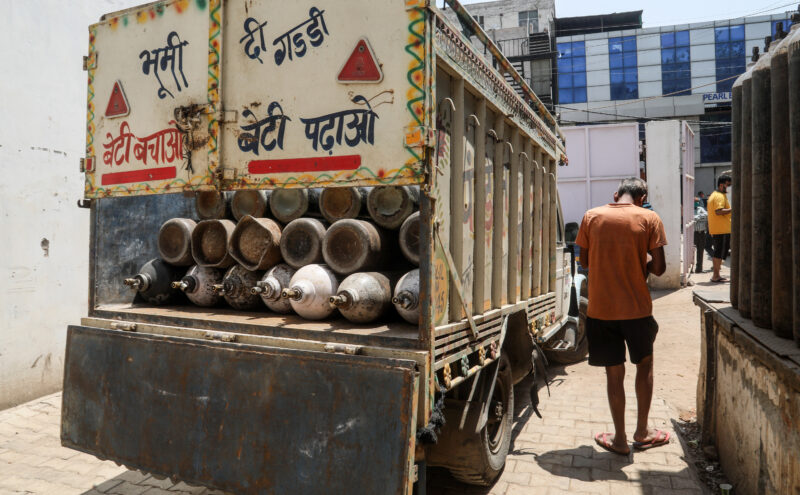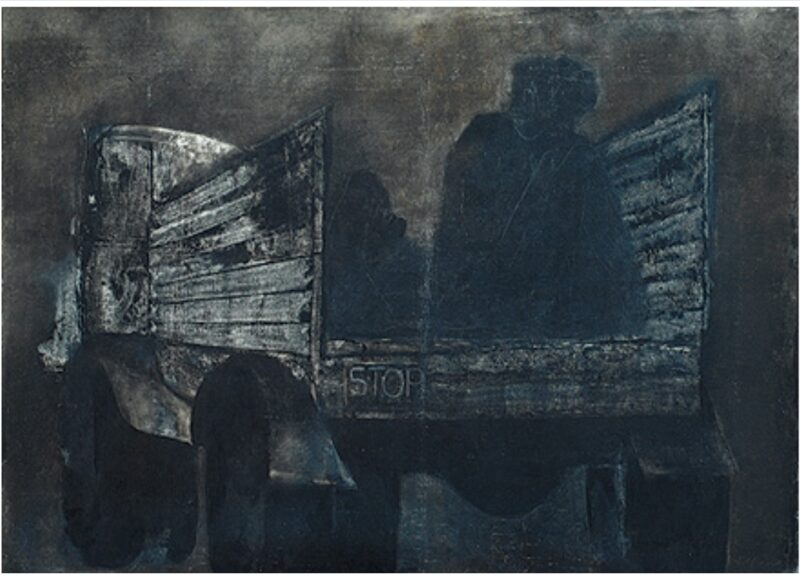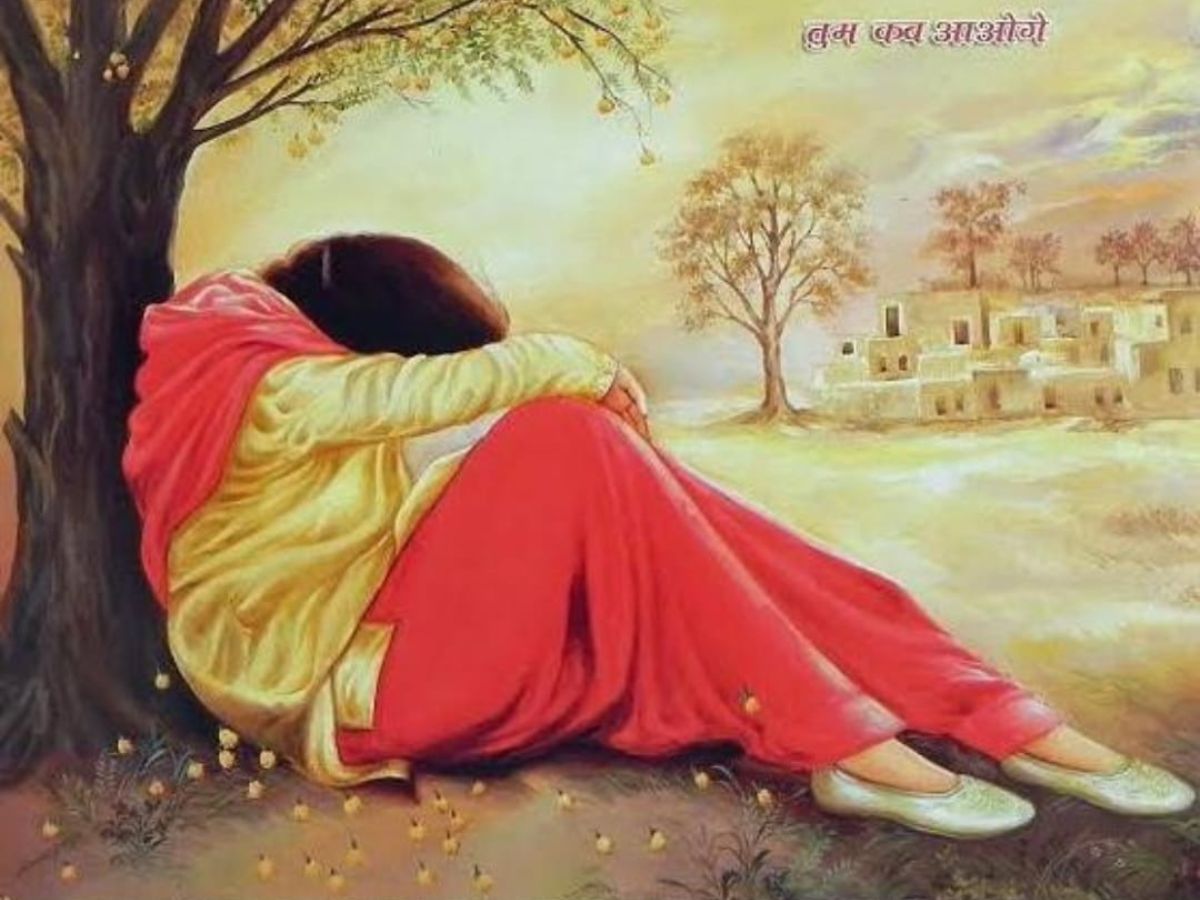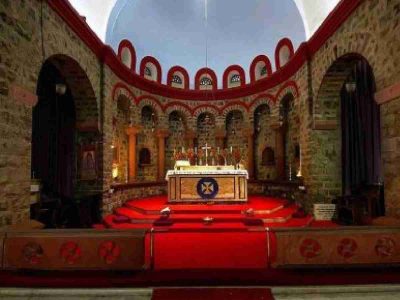When you’re driving on the highway and there is a truck in front of you, the first thing you notice is the message on the mud guard.
Dekho magar pyaar se! (Look, but with love) is a message that we have all grown up reading on the trucks. Another very common message, written in Hindi, on the trucks is phir milengey (See you again). Given the size of these behemoths compared to one’s sedan or hatchback, and the frightening manner and speed at which they move on the highways, nobody would like to respond to phir milengey in the affirmative.
However, if one watches carefully, there is more to messages on trucks than promises of reunion and words of parting.
Trucks in India have always carried the socio-political realities of the country on their body. Almost every truck these days carries the message Beti Bachaao, Beti Padhaao (Save the girl, Educate the girl) given by Prime Minister Narendra Modi to curb female infanticide and foeticide.
While some trucks have this slogan painted in Hindi on their rear, most have it on their sides. So widespread is the use of this slogan that it seems every truck has joined the government’s campaign to protect and educate the girl child.
“In Delhi, UP, Haryana, and Rajasthan, you will find this slogan on 90% of the trucks. For many of them, it is like a mission. They get the slogan written by some street painter. In some of the cases, it is the maalik (owner) who hires a painter,” says 49-year-old Nasir Khan, who drives his truck from Delhi to Vapi in Gujarat.
In the past, trucks would raise awareness about other social ills like dowry deaths. Dulhan Hi Dahej Hai (Bride is herself the dowry) would be a message painted on many trucks.

Similarly, in the 1970s when Indira Gandhi laid emphasis on population control with radio (All India Radio) and television (Doordarshan) often carrying programmes and jingles about the benefit of small families, the trucks were not left behind. Most trucks at that time would carry a simple slogan in Hindi Hum Do Hamaare Do (We two, Our two). Some went a step further and had the logo of a small family — a red triangle showing parents with two children — painted on them.
The simple message Jai Jawan Jai Kisaan was given by late PM Lal Bahadur Shastri during Indo-China war and also found its way on trucks. Some trucks even today carry the words of Netaji Subhash Chandra Bose Jai Hind on them. The slogan enthuses the masses. These messages have always been only scribbled on the trucks without too much attention to artistic elements.
Heart-touching messages
Senior journalist and Hindi writer Priyadarshan says, “Poetry, whether it is on trucks or on paper, its importance is measured by how much its message can touch your heart and how deep it is. Normally, we look at messages and poetry on trucks, other vehicles or on walls with scorn. It is because there is a popular element in it. We feel that it is meant to garner attention. But often, there are some deep messages in it. So often, we all get eye-opening messages that have in-depth meaning.”
He cites the example of writer Sarabjit in [Hindi weekly] Dharmyug who, he says, used to quote liberally in his articles in the 1980s, from what was written on the back of the trucks.
“A friend was recently telling me about messages on vehicles that operate on the mountains. He spotted a message on one such vehicle: jinhe jaldi thee, we chale gaye (Those who were in haste, have departed). This message says a lot on its own. There are couplets, small works of poetry, in which you can say that there isn’t anything profound but they can touch the chords of your heart. You also get to know from it that common people not just in our country but throughout the world are simple, loving or at least their ideal is this. And that is why these works of poetry touches them. Hardships in life can take toll on people but in the end, they are happy and content with these kinds of messages. At least, that is how I see them,” says the author of Zindagi Live, who has also written journalism books, poetry, stories as well as literary criticism.
Solution to loneliness
Slogans also help drivers in fighting loneliness.
“A truck driver’s life can be lonely. Reading such slogans gives us some energy, keeps us going long distances,” says Madan Lal, who drives his truck between Noida and Jharkhand.
Delhi-based artist Moonis Ijlal agrees and says that it is not just about the slogans but also how a truck is decorated that betrays a driver’s loneliness as well as his spouse’s.
“The long-distance lorry is a promiscuous journey in art, particularly in cinema, and quite literally on the road. Some trucks, depending on the region they are from, are decorated and dressed like a bride, as they say, with false braids, shimmers and colourful plastic festoons. A lonely woman waiting with her head down is one of the popular images painted on trucks, autos and buses. As if the vehicles are drivers’ absent wives and lovers left alone back home longing for them, while the drivers are being unfaithful to them from one dhaba to another. The promiscuous trucker away from home is the theme powerfully captured in the old classic film Uski Roti by filmmaker Mani Kaul. The trucker, played by Sanjeev Kumar, in Gulzar’s film Namkeen actually returns to marry the love of his life,” says Ijlal, who has painted cover for books like A.L. Basham’s The Wonder That Was India and Rahul Bhattacharya’s Pundits from Pakistan as well as showcased his work in exhibitions in India and abroad.
“The trucks, unlike cars on the road, have the quintessential shoe hanging at the back to ward off evil eye which adds a rural context of the drivers and the fact that the journey is dangerous and life-threatening for them,” he says further.
The slogan Buri Nazar Waale Tera Muh Kaala also reflects the concept of evil eye.
Ijlal also points at a 1974 painting by artist Krishen Khanna.

“Also comes to mind is Krishen Khanna’s 1974 painting titled Black Truck, a stark canvas of a lorry cutting through dark night with its occupants looking stateless and neglected. The letters STOP on the back corner of the truck is the plea against violence they suffer. It was also Khanna’s transition from abstract to figurative form and the choice,” he explains.
While messages on trucks are meaningful and reflect the focus on societal issues, whether they have an impact is still debatable.
Former Delhi University sociologist Sana Khan says, “We find some messages on trucks, a few of them are meaningful while others are quirky. I will not call these messages for their contribution to nation building, but the social packaging is certainly there.”





